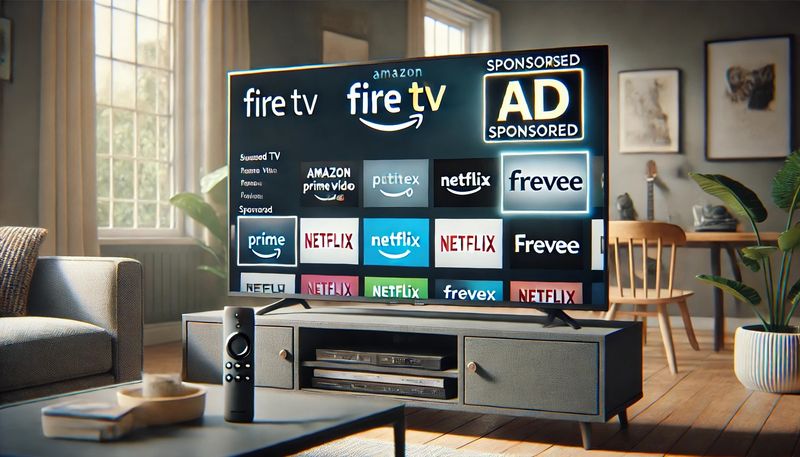- What is Amazon ACoS, and how do you calculate it?
- What is the difference between Amazon ACoS and RoAS?
- What is a good Amazon ACoS?
- What metrics does the Amazon ACoS depend on?
- How do I lower my Amazon ACoS?
- Conclusion
Amazon offers sellers and vendors various ways to advertise their products on Amazon. The Sponsored Products, Sponsored Brands and Sponsored Display campaign types follow the pay-per-click (PPC) principle - with a special exception for Sponsored Display. Advertisers pay per click on the ad. You can learn everything else about Amazon PPC campaigns in our related article.
After a successful launch, advertising campaigns must be monitored and optimized. The so-called ACoS (Advertising Cost of Sales) is a key performance metric. The ACoS shows you how much money you spent on advertising versus sales you received on Amazon.
This article explains the ACoS, how you calculate it, and what it is a good value for. In addition, we compare the ACoS with the RoAS and explain which other key figures the ACoS depends on.
What is Amazon ACoS, and how do you calculate it?
The ACoS indicates how much money you have spent on advertising concerning its revenue. Or put another way: How many euros of advertising spend do you have to invest for one euro of revenue. It is essential to understand that this is the advertising revenue and not the total revenue (including organic sales that were not generated by advertising). ACoS is intended to reflect the profitability of advertising campaigns.
The formula of the ACoS is: (advertising spend / advertising revenue) * 100
Example: Let's say you have a product that you sell net for 20 dollars. Within one week, you have spent 100 euros on Sponsored Products ads and thus achieved 40 sales. This results in an ACoS of (100 / 800) * 100 = 12.5 percent. You have spent 12.5 percent of your net revenue on advertising.
Notice
Check whether the ACoS in the Advertising Console was calculated based on gross or net sales. Strictly speaking, you need to subtract VAT from gross sales.
Is an ACoS of 12.5 percent a lot or a little?
Whether 12.5 percent is a high or low ACoS depends on your margin. If your margin is also 12.5 percent after deducting all costs and after taxes, an ACoS value of 12.5 percent means you are neither making a profit nor a loss. The ACoS doesn't tell you whether your ad campaigns are profitable or not, but it does help assess the efficiency and profitability of the ads. Generally speaking, the lower the ACoS value for the same absolute revenue, the more efficiently your campaign runs because, the less of your revenue you invest in advertising costs.
Let's take a closer look at the variables of the ACoS:
Advertising spend: Amazon calculates ad spend using the formula: Number of clicks x average CPC (cost-per-click). You can calculate the number of clicks with the formula number of ad impressions x CTR. Amazon usually provides the cost of advertising within 48 hours.
Advertising revenue: Amazon calculates advertising revenue using the formula: quantity sold x selling price per unit. Advertising revenue is a bit more complicated than advertising spend. Amazon has chosen an advertising attribution model since not all customers buy an item after first clicking on the ads. Depending on the product type, it can take a few days before Amazon customers decide to buy.
Due to different reflection periods of the customers, Amazon provides four periods with which one can view the advertising campaign's success. The different periods are called attribution windows by Amazon: 1 day, 7 days, 14 days, 30 days. If you look at the 1-day period, you will see the first reactions to the ad. However, it would help if you ran the campaign first to assess the overall value campaign. In the Advertising Console, the sales data refers to an attribution window of 7 days.
What is the difference between Amazon ACoS and RoAS?
The Amazon RoAS (Return on Advertising Spend) is the opposite or the inverse of the ACoS. Both metrics measure the relationship between advertising spend and advertising revenue generated and thus reflect the profitability of your advertising campaigns. While RoAS indicates how much revenue you get for one euro invested in an advertising campaign, ACoS indicates how much you spent on ads to gain one euro of revenue from attributed sales.
The RoAS is calculated by dividing the advertising revenue by the advertising spend, i.e.,: (advertising revenue / advertising spend) x 100
Example: Let's take the figures from the previous example again. Your advertising spend is 100 euros and the advertising revenue is 800 euros. This results in a RoAS of 800/100 = 8. Every euro you spent on your campaign generated 8 euros in sales.
Amazon ACoS versus Amazon RoAS
ACoS: For every euro spent on sales, I spent x euros on advertising. RoAS: For every euro spent on advertising, I have earned x euros in revenue.
What is a good Amazon ACoS?
The ACoS varies depending on the marketplace, ad type, competition, product price, and many other factors. As already indicated, it is difficult to say at what rate an ACoS is good or bad. It can be good when the ACoS falls, but it can also be good when it rises.
How to calculate a Break-Even ACoS
The Break-Even point is the point at which the expenses are equal to the revenue, i.e., the profit and the loss are similar to 0.
To calculate a product's profit or net margin, you have to subtract all cost items (e.g., manufacturing costs, Amazon fees, overhead costs like sales tax, etc.) from the net product price (profit per unit). To calculate the net margin, you divide the profit per unit by the selling price. For example, you sell a product for 100 euros net per unit. The total net cost (add manufacturing, shipping, etc.) is 75 euros per unit. Thus, you earn 25 euros per unit sold. This gives a net margin of (25 euros / 100 euros) * 100 = 25 percent.
The Break-Even ACoS corresponds precisely to the net margin because the net margin describes the point at which a campaign makes a profit or incurs a loss. If your ACoS is higher than the profit margin, you invest more in the campaign than you earn. If the ACoS is lower than the profit margin, you are making a profit, and the campaign is profitable. In the example, the profit margin is 25 percent. You do not lose money if you spend 25 percent of gross sales on Amazon campaigns. If you exceed the 25 percent, your campaigns become unprofitable.
Break-Even ACoS
We have seen that the ACoS must be equal to your margin for a campaign to be profitable in its own right: ACoS = advertising spend / advertising revenue ≤ net margin
Now, if you would like to not only not make a loss but also make a profit, you should set a target ACoS. Ultimately, it depends on your goals whether you focus on the Break-Even ACoS or determine your own target ACoS.
Selection of Amazon ACoS depending on your goals
With Amazon PPC campaigns, you pursue different goals, and depending on the goal, the ACoS can differ.
For example, for a new product launch, it makes sense to choose a higher target ACoS. In this case, maximizing sales is the highest priority. You may cause losses in the short term, but you build reviews, brand awareness, and improved organic ranking. If you have to spend money to do this, you should see the cost as a longer-term investment.
For example, if you want to maximize your reach by getting as many impressions as possible or maximize sales of a new product, efficiency and profitability are secondary.
For established products with many reviews and already high brand awareness, maximizing profits is usually the most crucial goal. You should set a relative target ACoS below your break-even margin to achieve this goal.
Is an ACoS above my margin always bad?
It is not possible to make a general statement about the value at which an ACoS is good or bad. Especially if a product is new, you will hardly manage to set up a campaign that is already profitable. Don't set this as your primary goal at the beginning, either! For a new product launch, the goal is to position the product in the search results and build an improved organic ranking to sell "itself" later.
Overall, when optimizing ACoS for ads, one should consider efficiency, profitability, revenue, and the number of impressions generated.
How do I assess my ACoS?
To evaluate the ACoS, it is helpful to compare your ACoS with the ACoS of your competitors. For this purpose, Amazon provides you with a report in the Advertising Console. The Category Benchmark report shows you how your brand performs in a specific category compared to competitor brands over a particular period.
In Seller Central, click "Campaign Manager" under "Advertising" to go to the Advertising Console:
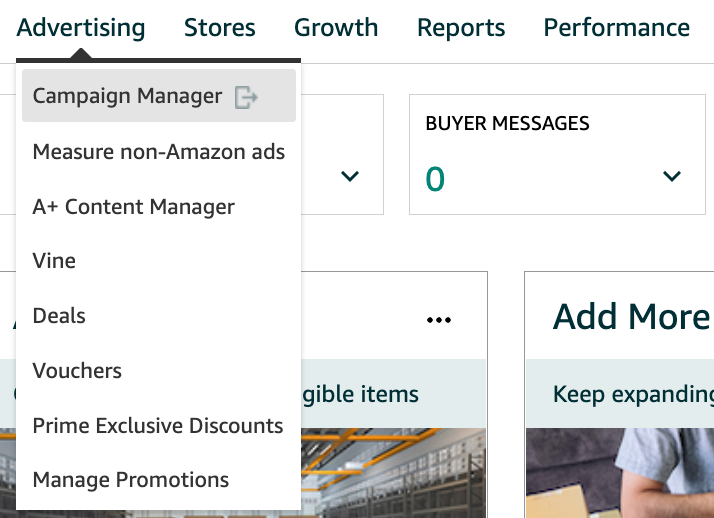
Then, in the Advertising console, click "Reports" in the left column under "Measurement & Reporting":
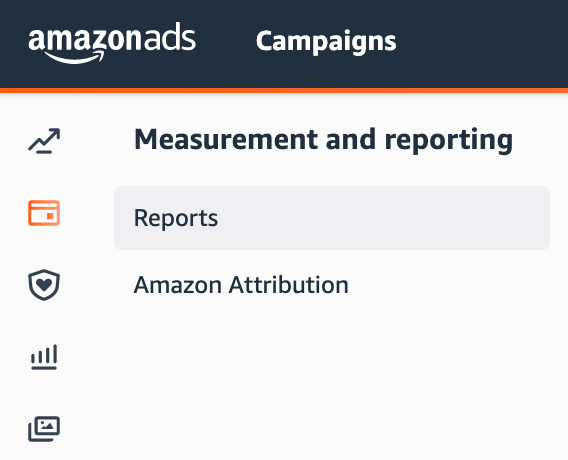
Select "Sponsored Brands" for the Report category and "Category Benchmark" for the Report type:
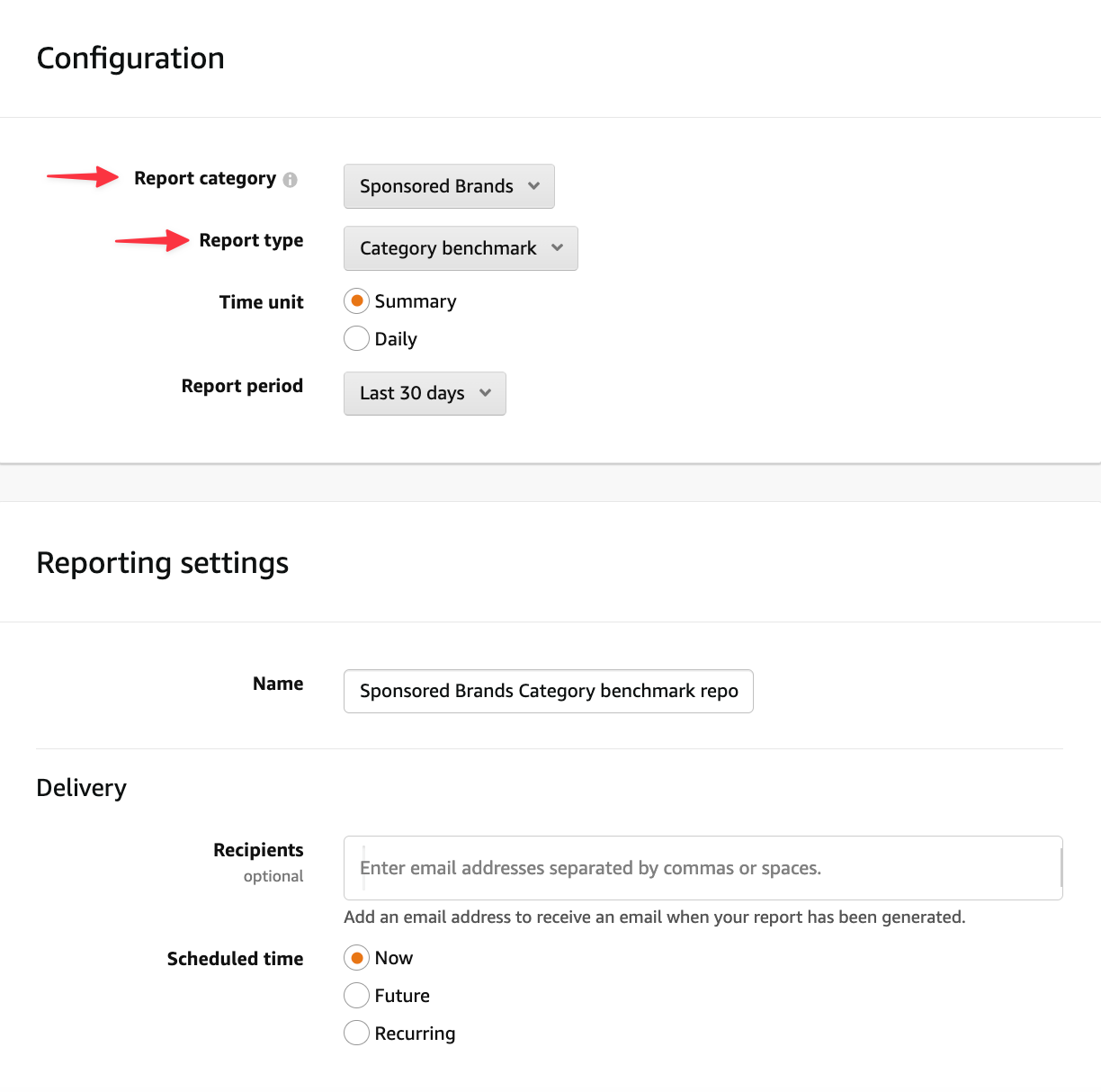
Category benchmarks are available for impressions, click-through rate (CTR), return on ad spend (RoAS), and attributed cost of sales (ACoS). Each metric is compared to the results of competitors in the median (50 percent), bottom quartile (25 percent), and the top quartile (75 percent) within specific categories.
This report can evaluate your ACoS by comparing your metrics to your competition's.
A high ACoS may also be good if your impressions are high. On the other hand, a low ACoS combined with low impressions can also be good. This again depends on your goals. If you want your ad to appear at the top, you need many impressions, and the ACoS will increase.
It is a good sign if you have a high click-through rate (CTR) compared to the competition. Your ads look appealing to the customer and will be clicked. At the same time, if you have created the campaign manually, you have selected appropriate keywords.
The click-through rate should be high if you have a low ACoS and few impressions. In such a case, the reach is minimal, and the keywords you set should have at least a high relevance.
Ideally, you will have a high ACoS compared to your competitors, with many impressions and a high click-through rate simultaneously. This speaks for a well-set-up campaign that captures a high market share.
In general, you should not only keep an eye on the ACoS but also on the contribution margin. Up to a certain point, your advertising revenue increases the more advertising costs you spend. The opposite is also true: advertising revenue is lost if advertising costs are saved. Depending on how elastic demand is, you invest more in advertising costs at a certain point but receive less revenue in return. Ideally, you will find the point at which you make the most revenue after deducting advertising costs.
What metrics does the Amazon ACoS depend on?
To understand how you can lower Amazon ACoS, you first need to get an overview of which metrics affect Amazon ACoS:
- Cost-per-click (CPC): the CPC depends on your bid and the competition. Since bidding auctions are second-price auctions where you always pay 0.01 euro more than necessary to outbid the bidder behind you, your CPC is always lower than the actual bid (you always have to pay 0.01 euro more than the second bidder in the auction). The higher your net margin is, the more you can spend on advertising per click.
- Conversion rate: the conversion rate indicates how many visitors to your Amazon store make a purchase. Calculating orders by clicks represents your offer's persuasiveness and product detail page. The higher the conversion rate, the lower the ACoS, or the more you can spend per click (CPC).
- Orders: the metric indicates how often a prospect bought the item after clicking on the ad.
How do I lower my Amazon ACoS?
As we have seen, the ACoS is influenced by various key figures. One way to optimize the ACoS is to focus on the individual metrics.
Take the "cost-per-click" (CPC), for example. The cost varies depending on the marketplace, product, and competition. The greater the competition, the higher your bid needs to be. Here, it may also make sense to invest more when launching a product and consider it as a long-term investment in organic search. To reduce the CPC, you need to lower your maximum bid for the particular keyword or product target.
If the conversion rate increases, the Amazon ACoS decreases (and vice versa). The product detail page plays a big role in the conversion rate. If buyers click on your ad, then the product detail page must convince them to make a purchase. You optimize your conversion rate by optimizing images, title, keywords, description, A+ content, videos, product reviews, and questions.
Optimizing metrics is always helpful, but it can take some time. That's why we're going to look at strategies for how you can directly impact ACoS.
To lower the ACoS, reduce your bids step by step. This measure is helpful if you set a target ACoS after a new product launch to sell economically. Even if the process takes longer, lower your bids gradually to avoid an extreme drop in visibility.
If you are looking for a quick solution to lower the ACoS, you should download a so-called bulk-file in the Amazon Advertising console and work on it.
In Seller Central, click "campaign manager" under "Advertising" again to open the Advertising Console.
In the left column, under "Sponsored ads", click "bulk operations":
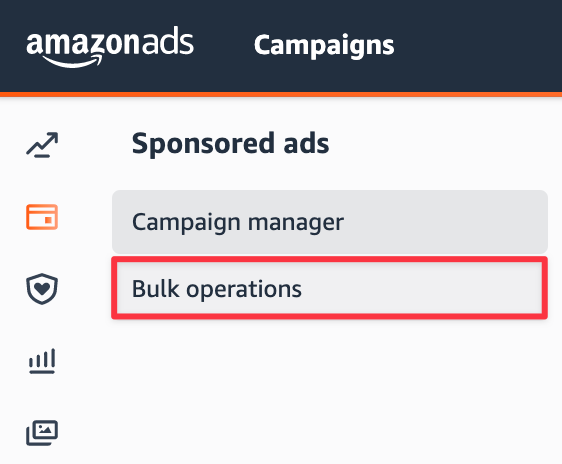
Then you narrow down the date range and can exclude different campaign dates:
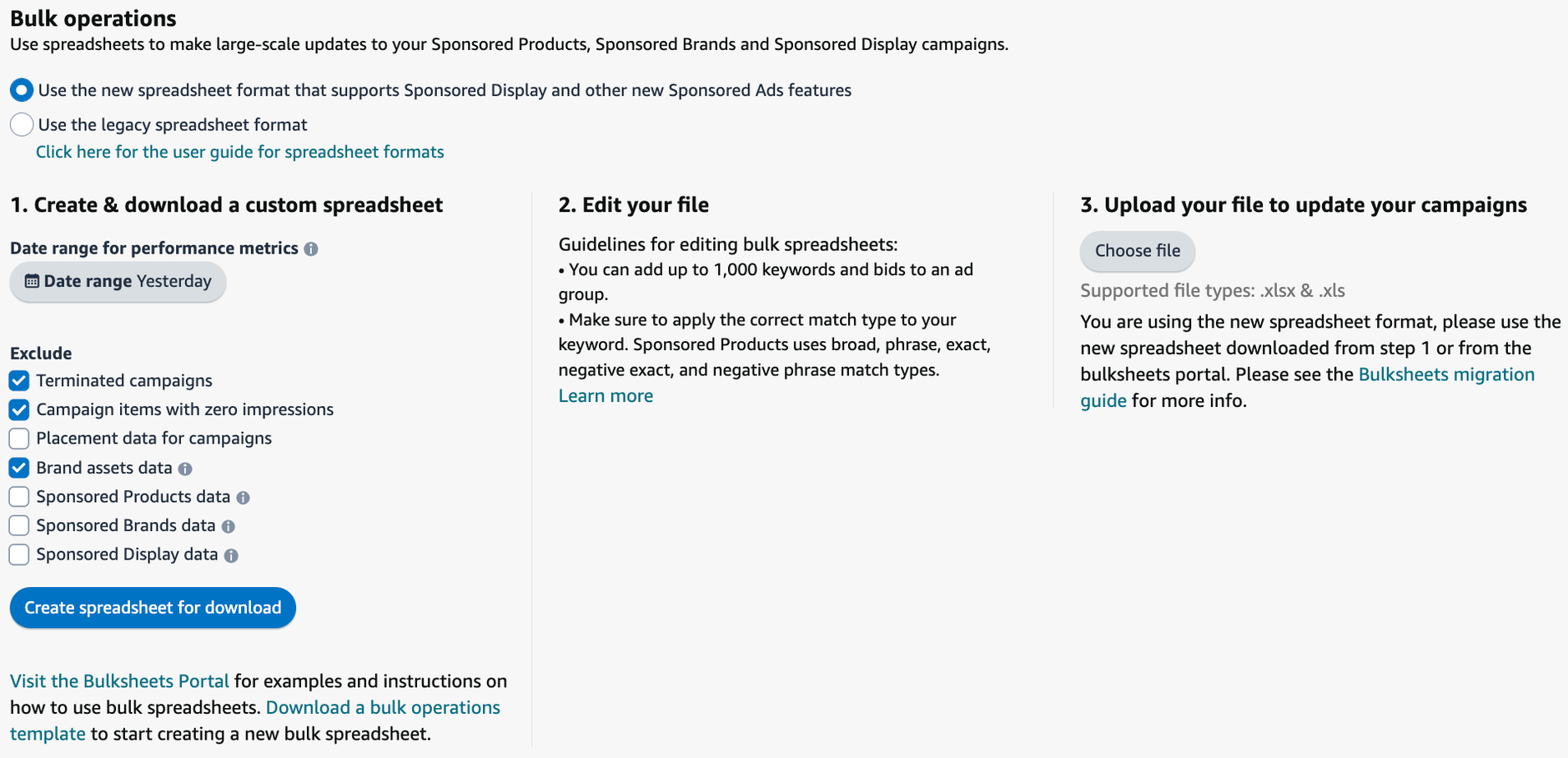
With such a bulk operation, you collectively create, manage and optimize your campaigns.
Download the data of the last 60 or 30 days, and you will get a detailed Excel sheet. Analyze the Excel sheet and look for keywords with too high ACoS, for example. Lower the bids for these keywords for more efficient keyword targeting. You can also filter for keywords that have generated many sales and, therefore, a high revenue. For such keywords, you can increase the bids. If you want to lower your ACoS quickly, you can filter for bids that have not generated any sales and pause them. However, it would help if you did this only in an emergency because you will lower the ACoS but lose visibility simultaneously.
Conclusion
Set a goal at the beginning of your advertising campaigns and determine what you want to achieve. From this, define your target ACoS. If the elasticity of demand is high, a higher ACoS may generate a higher contribution margin. A lower ACoS is not necessarily better.


